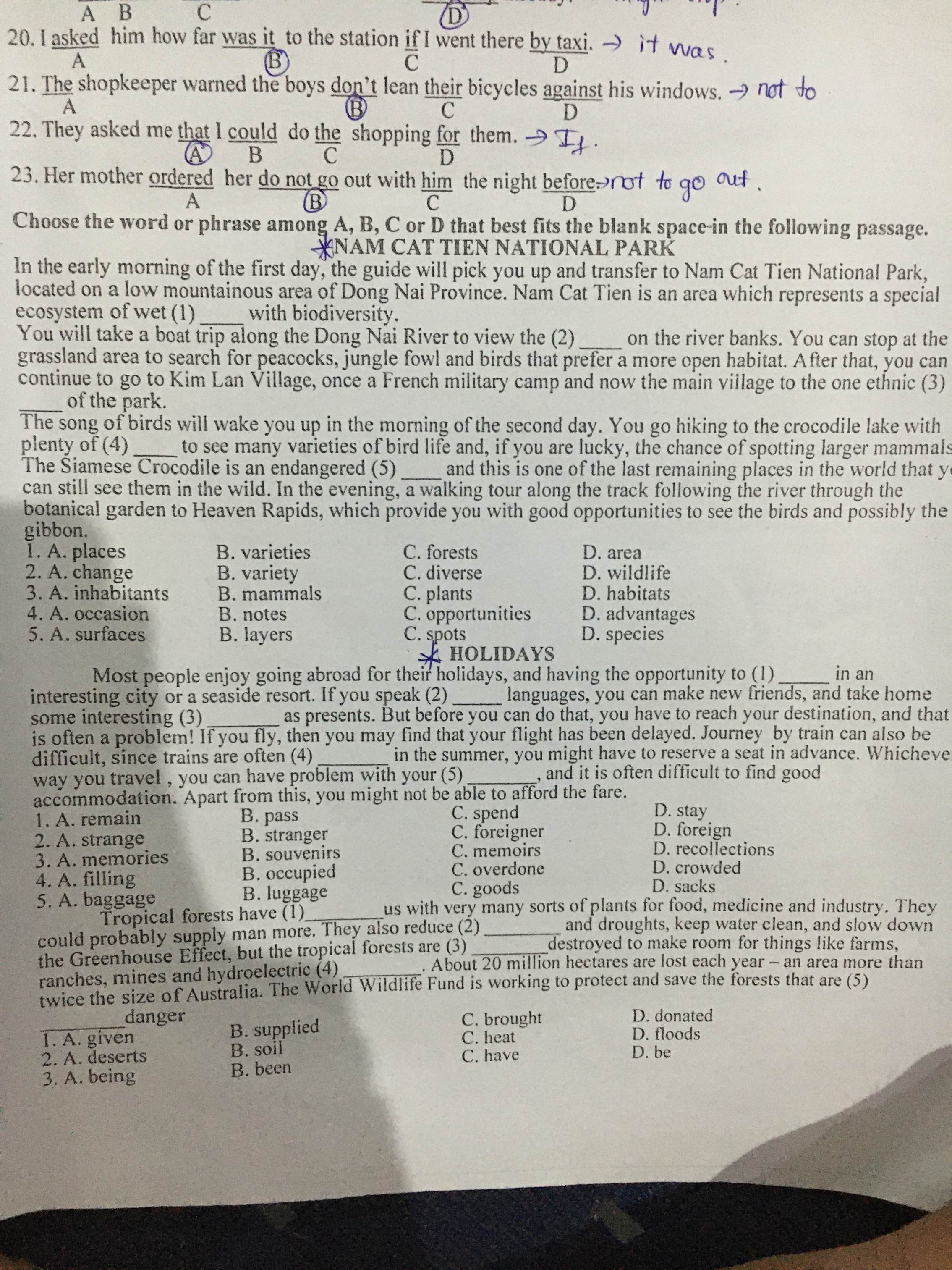
Hãy nhập câu hỏi của bạn vào đây, nếu là tài khoản VIP, bạn sẽ được ưu tiên trả lời.


In the United States and its territories alone, there are more than 40 national parks, varying considerably in landscape and mood. Each park was chosen for its unique features, representatives of a particular region of the country. Everglades national park, for example, at the southern tip of Florida, is a huge subtropical swamp, which provides refuge for such unusual reptiles as the alligator and for thousands of varieties of birds, including the graceful pink flamingo.
In sharp contrast to the Everglades are the arid, dusty parks of the west. Mesa Verde national park in Colorado, for example, preserves the ruins of an Indian civilization which flourished in the twelfth and thirteenth centuries. Today, tourists can wander through the awesome cliff dwellings that the Indians carved out of the steep rock.
1. What is the main idea of the passage?
a. The large number of nation parks
b. National parks as a wildlife refuge
c. The diversity of the national parks
d. The differences between Mesa Verde National Park and the Everglades
2. National parks in the US _________________.
a. are a lot different from each other
b. change a lot in landscape and mood
c. are made more interesting
d. are completely different from other parks in the world
3. Everglades National Park is ________________.
a. in the south of the United States
b. home to alligators and many varieties of birds
c. an area of land that is full of water
d. all are correct
4. The word “which” in line 10 refers to
a. Mesa Verde National Park
b. the ruins
c. Indian
d. civilization
5. Which of the following statements is false?
a. Every national park in the US has its special features
b. Everglades Park has a cold climate
c. The ruins of an Indian civilization are being preserved
d. Some of the dwellings in Mesa Verde are accessible only by ladder

There is a large... of animals that live in Nairobi National Park A various B varied C variety D vary

Cát Bà National Park is located approximately 30 kilometres (19 mi) east of Hai Phong, Viet Nam and covers most of Cát Bà island. The park was established on 31 March 1986. The island is mainly limestone with alternating narrow valleys running north-east to south-west. The park covers about 263 square kilometres (102 sq mi) and comprises 173 square kilometres (67 sq mi) of land and 90 square kilometres (35 sq mi) of inshore water. It is famous for the Cát Bà langur, also known as the white-headed langur (Trachypithecus poliocephalus) is resident within the park and is classified by the International Union for Conservation of Nature as a critically endangered primate; one of the rarest in the world. So far, 282 fauna species have been recorded in the park. These include 32 species of mammals, 78 bird species, 20 species of reptiles and amphibians, 98 species of zooplankton, 196 species of marine fish and 177 species of coral. And over 1,500 species of plants have been recorded including 118 trees and 160 plants with medicinal properties.

Đoạn 1
1 D
2 D
3 A
4 C
5 D
Đoạn 2
1 D
2 D
3 B
4 D
5 B
Đoạn 3
1 B
2 D
3 A